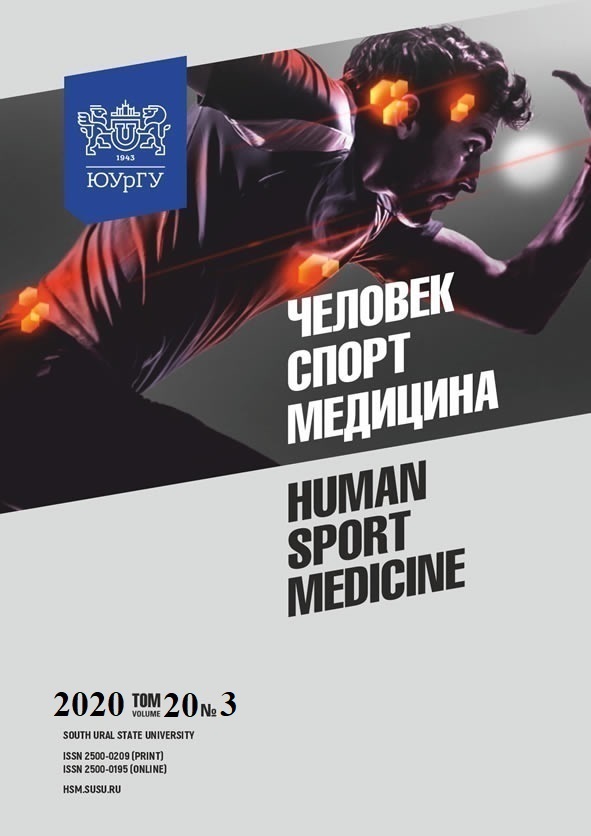NOCICEPTIVE THRESHOLD IN HEALTHY WOMEN AT REST AND WHEN READY FOR PHYSICAL ACTIVITY
Abstract
Aim. The paper aims to evaluate pressure-pain-threshold (PPT) in the paravertebral areas of the back (lumbar, thoracic, cervical levels) in relatively healthy individuals in various functional states. Materials and methods. The study involved volunteer female students (n = 150). Heart rate measurement and tonometry were performed using the B.WELL PRO-33 automatic tonometer. The level of functional readiness for physical exercises was assessed by the method of Kolmogorov et al. (2007). In group I (n = 45), PPT measurements were carried out at rest in the laboratory room. In group II (n = 105), PPT data were obtained before physical activity. Women of both groups were divided into subgroups by the absence (1) or presence (2) of complaints of back pain. PPT measurements were carried out using the Wagner FPX pressure algometer (USA). Standard statistical methods were used for data analysis. Results. A significant effect of the functional state on PPT values was found. In group II, against the background of readiness for physical activity, the mean values of PPT in the paravertebral areas were 20–40 % higher than in group I. The PPT values were the highest in the area of the lumbar spine. Conclusion. Changes in the dynamic stereotype (from a state of rest to readiness for physical activity) lead to an increase in the absolute values of PPT up to 40 %. This phenomenon indicates that the emotional component of physical exercises has an analgesic effect.
References
References on translit
Copyright (c) 2020 Human. Sport. Medicine

This work is licensed under a Creative Commons Attribution-NonCommercial-NoDerivatives 4.0 International License.















